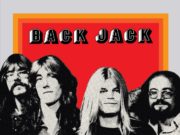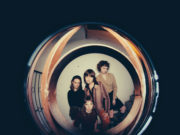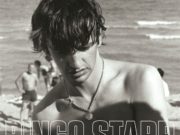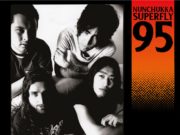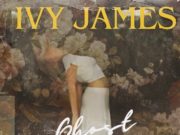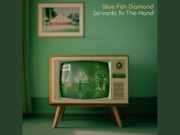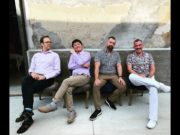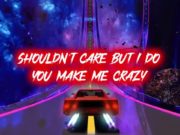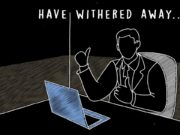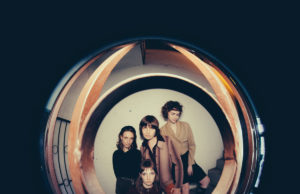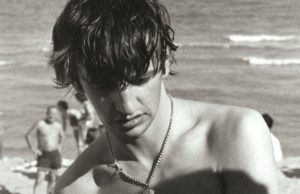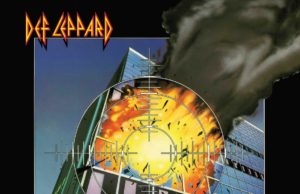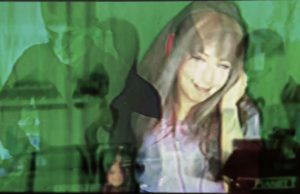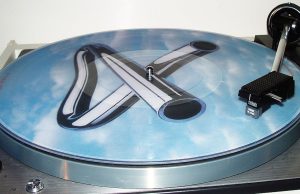 I have a clear memory of reading the lyrics to Hello Hooray, printed on the inner sleeve of the copy of Billion Dollar Babies I got for my tenth birthday. Thanks to them, I was able to imagine myself at an Alice Cooper concert:
I have a clear memory of reading the lyrics to Hello Hooray, printed on the inner sleeve of the copy of Billion Dollar Babies I got for my tenth birthday. Thanks to them, I was able to imagine myself at an Alice Cooper concert:
“Hello! Hooray!
Let the show begin
I’ve been ready
Hello! Hooray!
Let the lights grow dim
I’ve been ready
Ready as this audience that’s coming here to dream
Loving every second, every moment, every scream
I’ve been waiting so long to sing my song.”
And just the other day, something possessed me to spin the debut album by Aerosmith, which, like Billion Dollar Babies, also came out in 1973. The opening track, Make It, reminded me of Hello Hooray a little, because it also speaks directly to the audience. In fact, in a much more direct way.
“Good evening people, welcome to the show
Got something here I want you all to know
When life and people bring on primal screams
You got to think of what it’s gonna take to make your dreams.”
I got thinking about how many songs I have in my collection that do this — speak directly to the listener, as though it was an in-person exchange at a performance. Sometimes it’s meant to emulate a concert experience, and other times the bandleader is introducing the musicians. Sometimes, the direct address is a more creative one — like between a minister and congregation or a dictator and rally attendees. Let’s go through some of the ones I found.
Perhaps the most obvious one is the title track from Sgt. Pepper’s Lonely Hearts Club Band. I guess Paul McCartney was already suffering from audience withdrawal after packing in touring a year earlier.
“It’s wonderful to be here
It’s certainly a thrill
You’re such a lovely audience
We’d like to take you home with us
We’d love to take you home.”
They absolutely would not. Pack of lies.
I’ve always liked Cheap Trick’s decision to open and close their shows with songs Hello There and Goodnight Now. They do this on their famous Live At Budokan album from 1978. I used to play in a band that covered at least one of them. Only one of the tracks — Hello There — has a studio version, appearing on the 1977 album In Color. Guitarist Rick Nielsen essentially created a new version with different lyrics in order to close the show with Goodnight Now:
“Good night now ladies and gentlemen
That’s the end of the show, now it’s time to go.”
The opening track on the 1968 debut album by Elmer Gantry’s Velvet Opera (they only made two) does the same sort of thing. Except, they introduce the band. It’s actually my favourite song on the record.
“Hello there, ladies and gentlemen!
I’d like to welcome you to Elmer Gantry’s Velvet Opera
I’m gonna introduce you to the orchestra:
The man on the guitar is Colin Forster
And the guy on the bass is John Ford
And the man on the drums is Hud
We’re gonna start the show with a vocal number
Called Mother Writes.”
The drums are wicked. Anybody who’s been to a concert or gig knows band introductions are part of the show. It’s kinda fun when the band chooses to do it on a studio album. Suggests to me they like the little song they created in which to do it. A classic and brilliant example is Tighten Up by Archie Bell & the Drells:
“Hi everybody
I’m Archie Bell of the Drells, from Houston, Texas
We don’t only sing
But we dance just as good as we walk
In Houston, we just started a new dance
Called the Tighten Up
This is the music we tighten up with
First tighten up on the drums
Come on now, drummer
I want you to tighten it up for me now, oh, yeah
Tighten up on that bass now
Tighten it up, ha, ha, yeah
Now let that guitar fall in
Oh, yeah
Tighten up on that organ now
Yeah, you do the tighten up, yeah, now.”
One person who seems to have also thought this was a pretty cool idea was Stewkey Antoni, lead singer of The Nazz (featuring Todd Rundgren). Their song Loosen Up is a direct parody of Tighten Up, apparently recorded during a spontaneous jam.
“Hi everybody,
we’re the Nazz from Philadelphia,
Home of the tuna fish hoagie
In Philadelphia, we do a little thing
Called the loosen up.
It goes like this
First we loosen up on the drums.
OK, now we loosen up on the bass. All right
Let the guitar player fall in.
Now then, now then, the organ player.
Get loose everybody.”
The incredible Canned Heat did a similar, more genuine thing, on their 1968 sophomore album Boogie With Canned Heat. Unlike their debut, it’s made up of original songs including the hit On The Road Again, which led to their invitation to play Woodstock the following year. The last song on the album, the delightfully titled Fried Hockey Boogie, introduces each band member to the listener like you’d see towards the end of a live show.
“Ever since the days of our last album
Well, folks come along and asked us why didn’t we uh, kinda uh, get it on on our next record
So we kinda thought that over and decided that would be a pretty good idea
So well, we decided to demonstrate to you how each of the boys in the band does his little thing.”
The Bonzo Dog Doo-Dah Band was created in the ’60s by a bunch of British art students. They combined surreal humour with music — initially jazz, and then moving to rock. They rose to prominence thanks to an invitation by Paul McCartney to appear in the Magical Mystery Tour film, performing Death Cab For Cutie in a burlesque act. Songwriter/pianist/guitarist Neil Innes went on to be a frequent collaborator with Monty Python, and co-founded the uncanny Beatles parody The Rutles with Eric Idle. Bonzos drummer “Legs” Larry Smith was a close friend of George Harrison who designed the cover of his 1982 album Gone Troppo and is the subject of His Name Is Legs (Ladies and Gentlemen) from 1975’s Extra Texture. He also is heard tap dancing on Elton John’s I Think I’m Going To Kill Myself from 1972’s Honky Chateau.
No surprise, then, the opening track on Side 2 of their debut album Gorilla (1967) — The Intro And The Outro — is a pisstake on these band introductions. It starts off accurately, but soon includes many famous figures who were certainly not in the band.
“Big hello to big John Wayne, xylophone
And Robert Morley, guitar
Billy Butlin, spoons
And looking very relaxed, Adolf Hitler on vibes… nice
Princess Anne on sousaphone… mmm
Introducing Liberace, clarinet
With Garner “Ted” Armstrong on vocals
Lord Snooty and his pals, tap dancing
In the groove with Harold Wilson, violin
And Franklin McCormack on harmonica
Over there, Eric Clapton, ukulele… hi, Eric
On my left Sir Kenneth Clark, bass sax… a great honour, sir
And specially flown in for us, a session’s gorilla on vox humana
Nice to see Incredible Shrinking Man on euphonium
Drop out with Peter Scott on duck call
Hearing from you later Casanova, on horn… yeah!
Digging General de Gaulle on accordion… really wild, General! Thank you, sir
Roy Rogers on Trigger
Tune in Wild Man of Borneo on bongos
Count Basie Orchestra on triangle… thank you
Great to hear the Rawlinsons on trombone
Back from his recent operation, Dan Druff, harp
And representing the flower people, Quasimodo on bells.”
Sometimes musicians choose to take on the role of preachers, addressing their faithful — instead of the anonymous record-buying public. A classic example of this is the intro to the 1967 song Let It All Hang Out by The Hombres. I first heard this song when it was successfully covered by The Nails in 1984.
“A preachment, dear friends, you are about to receive
On John Barleycorn, nicotine, and the temptations of Eve.”
The Nails’ version has a slight change — opting for “the rock and roll chord E” rather than “the temptations of Eve.” The same year as the Boulder, Colo., band (who had pre-name-change Jello Biafra as a roadie) recorded their cover, a certain regal Minneapolis musician had a hit song that also started with a devotion.
“Dearly beloved
We are gathered here today
To get through this thing called life
Electric word, life
It means forever and that’s a mighty long time
But I’m here to tell you there’s something else
The afterworld
A world of never ending happiness
You can always see the sun, day or night
Let’s go crazy.”
Pink Floyd’s Roger Waters chose a fascist dictator rather than a man of the cloth, when he addressed the audience as “Pink” — the central character in his concept album The Wall. The album opens and later climaxes with a track called In The Flesh?, which was named after the band’s previous tour and influenced by an awful exchange Waters had with unruly fans at Montreal’s Olympic Stadium in 1977.
“So ya thought ya might like to go to the show
To feel the warm thrill of confusion
That space cadet glow
I got some bad news for you sunshine
Pink isn’t well, he stayed back at the hotel
And they sent us along as a surrogate band
We’re gonna find out where you fans really stand.”
King Crimson lyricist Pete Sinfield co-wrote the lyrics for Emerson, Lake & Palmer’s epic song Karn Evil 9 with Greg Lake. The centrepiece of 1973’s Brain Salad Surgery, the song is longer than an album side and the most famous part of it (First Impression Part 2) is told through the character of a carnival barker. I hate this album so much.
“Welcome back my friends to the show that never ends
We’re so glad you could attend,
Come inside, come inside.”
Towards the end of The Who’s 1969 concept album Tommy, the title character becomes a cult figure after using pinball to free himself of trauma-induced deafness, blindness and the inability to speak. A summer camp gets started for Tommy’s followers. The track Tommy’s Holiday Camp is one of only four on the original double album not written solely by Pete Townshend. It’s written and sung by Who drummer Keith Moon. In fact, Moonie performs — barker-style — it on both the album and the 1975 film, though the movie version is longer and has an extended bit instructing camp attendees to make sure to buy their Tommy-related products like T-shirts, stickers, mirrors to smash, shades and earplugs, records and corks.
“Hello there darlings!
I’m Tommy’s Uncle Ernie,
And I welcome you to Tommy’s Holiday Camp!
Don’t rush…keep steady!
Have your money ready!
Buy your way to heaven.
That comes to one pound seven.
Bless you love.
Buy your shades and ear plugs here!
Keep in line. I’ve got a huge supply.”
He was a sort-of natural history museum guide rather than a barker, but Vincent Price is certainly quite enthusiastic about spiders in his introduction to The Black Widow on Alice Cooper’s 1975 album Welcome To My Nightmare. One imagines he is speaking directly to us, as a group touring the displays of bugs and spiders. The brilliant and campy bit was written by Cooper and producer Bob Ezrin.
“Leaving Lepidoptera…
Please don’t touch the display, little boy. Oh-ho-ho… cute.
Moving to the next aisle, we have Arachnida, the spiders, our finest collection.
This friendly, little fellow is the Heptithilidae, unfortunately harmless.
Next to him… the nasty Lycosa Raptoria. His tiny fangs cause creeping ulcerations of the skin.
And here… my prize, The Black Widow.
Isn’t she lovely? And so deadly.”
Finally, a few years earlier, The Rolling Stones wrapped up their psychedelic 1967 album Their Satanic Majesty’s Request in similar fashion — with Mick Jagger taking on the role of an emcee at a burlesque show for On With The Show. It’s obviously a pretty bold ripoff of Sgt. Pepper.
“You’re all such lovely people
Dancing gaily round the floor
But if you have to fight
Please take your trouble out the door
For now I say with sorrow
Until this time tomorrow
We’ll bid you all a fond adieu
On with the show good health to you!”
I think this calls for a playlist. Step right up:
• • •
Area Resident is an Ottawa-based journalist, recording artist, music collector and re-seller. Hear (and buy) his music on Bandcamp, email him HERE, follow him on Instagram and check him out on Discogs.


